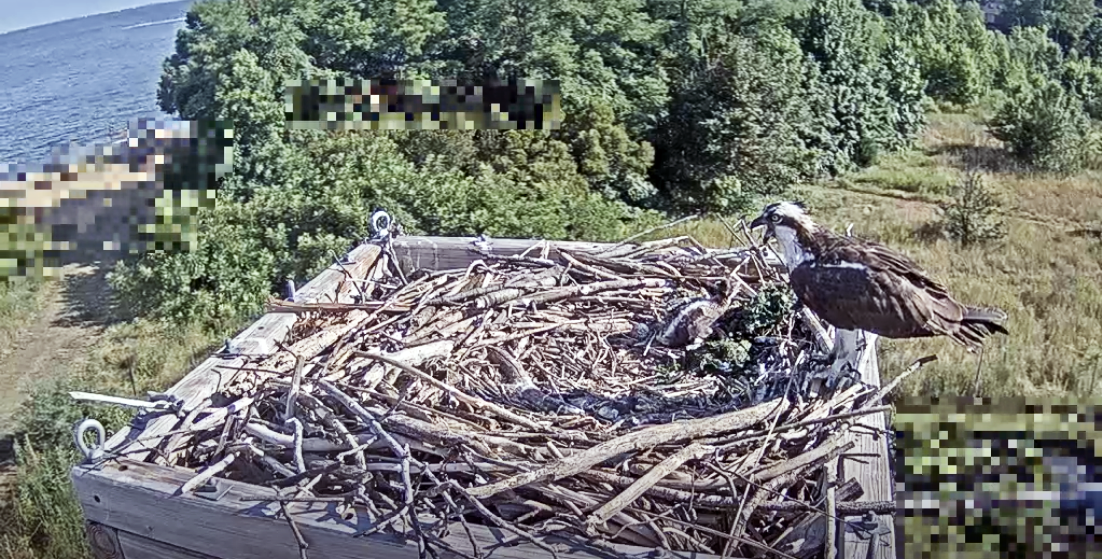It's summer! And with it comes the all-too-familiar sultry afternoons, leisurely swims, and comforting cheep-cheep-cheep of the Chesapeake's osprey.
Often called the "osprey garden," the Chesapeake Bay has the most concentrated population of osprey in the world with more than 2,000 nesting pairs. And we welcomed a pair on our very own osprey platform here at the Merrill Center just a few months ago. On July 2, the pair expanded its family and welcomed a baby osprey who is growing stronger every day and viewable on our osprey cam!
Take a look at a recent video snapshot below of mama osprey feeding baby a hearty menhaden . . . it's waaaay better than Netflix. Both parents will stick together and feed and care for the chick for 40-55 days after hatching until it learns to fly. Make sure to keep an eye on our osprey cam for that next big milestone!
And here are just a few more things (because I know you can't get enough) that make osprey so extraordinary—and perhaps my favorite bird:
- The osprey mates for life, returning to the very same nest year after year, where it reunites with its mate (after wintering apart), breed, and fish for menhaden and other prey using its expert angling skills.
- With its majestic wingspan of five to six feet, the osprey is often confused with the bald eagle. The large, brownish-black raptor has a mostly white head and underparts, with a distinctive black stripe running across both eyes. It typically grows to between 21-24 inches in length and 2.5-4.5 pounds in weight. The female has a “necklace” of sorts with brown-tipped breast feathers.
- Feeding almost exclusively on medium-sized fish, the osprey is a superb hunter. From 30 to 120(!) feet in the air, it can spot its prey, dive down to the water (sometimes becoming completely submerged in the process), and pluck its dinner between its curled claws. Once in the air, the osprey will situate the squirming fish headfirst to lessen wind resistance.




